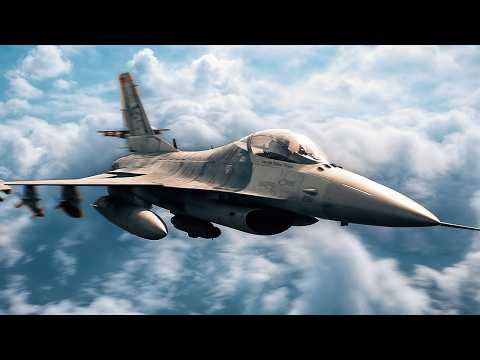In the high-stakes world of military aviation, dominance in the skies has always been a matter of speed, strategy, and sheer technological brilliance. Among the most iconic stories of aerial supremacy is that of the F-16 Fighting Falcon—a sleek, agile fighter jet that came to redefine air combat. And when we say “F-16 Falcons ate Hawks for breakfast,” we’re diving into the metaphorical clash between the Falcon and its adversaries, both in training and in combat.
The F-16 Fighting Falcon first took flight in 1974, quickly proving it was no ordinary fighter. Designed as a multirole jet, the F-16 was intended to outmaneuver opponents in dogfights while being adaptable enough for ground-attack missions. The jet’s light frame, advanced fly-by-wire system, and bubble canopy for 360-degree visibility gave pilots a massive edge. It was a stark departure from the bulkier, less nimble fighters of previous generations.
So, who were the “Hawks” in this scenario? One might consider the phrase a nod to older, less advanced aircraft like the Hawker Hunter or even competitors like the F-15 Eagle, which some fans have affectionately referred to as a “Hawk.” The Hawker Hunter, for instance, was a British jet that made its mark in the 1950s and 1960s. Though formidable in its time, it lacked the advanced avionics, speed, and maneuverability that the F-16 brought to the table. In NATO exercises and training drills, the F-16 often sparred against these older jets, metaphorically devouring them with ease.
The F-16 wasn’t just about raw performance; it was about versatility. In combat, its agility allowed it to outmaneuver opponents in tight dogfights, while its ability to carry a wide range of weapons made it a threat in almost any scenario. During the 1982 Lebanon War, Israeli F-16s showcased this dominance by destroying dozens of Syrian MiGs without losing a single jet. In these encounters, the Falcon’s ability to combine speed, firepower, and situational awareness rendered its adversaries almost defenseless. It wasn’t just eating Hawks—it was feasting on them.
But the “Hawks” weren’t limited to rival aircraft. The phrase can also be seen as a challenge to outdated strategies and philosophies of air combat. Older jets were often built with a focus on brute force and straight-line speed, while the F-16 emphasized agility, precision, and adaptability. It was an evolution of thinking as much as technology. In this sense, the Falcon represented a new era, leaving behind the outdated “hawks” of the past.
Today, the F-16 remains in active service with air forces worldwide, despite being joined by fifth-generation fighters like the F-35. Its longevity is a testament to its superior design and adaptability. While the “hawks” of its era may have faded into history, the Falcon soars on, proving that true excellence doesn’t just dominate—it endures.
In every sense, the F-16 Fighting Falcon wasn’t just a jet. It was, and still is, a predator in the skies—one that redefined what it meant to rule the air.


